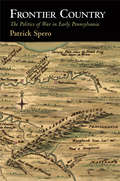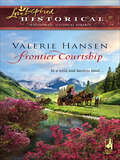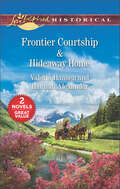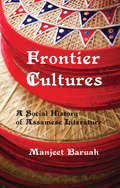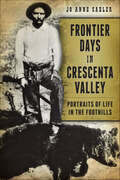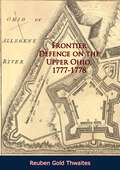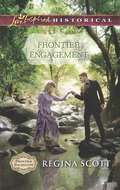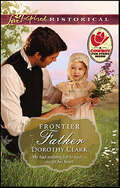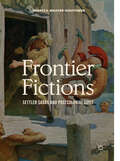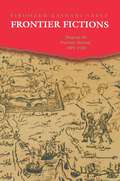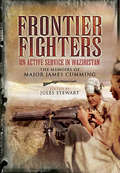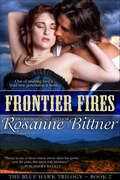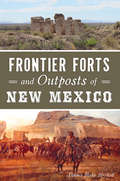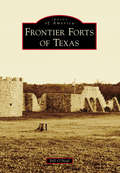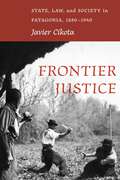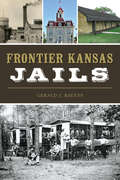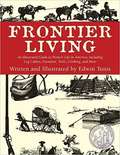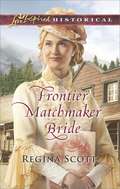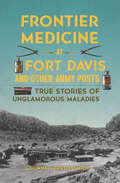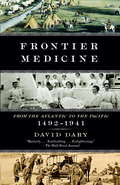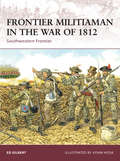- Table View
- List View
Frontier Contact Between Choson Korea and Tokugawa Japan
by James B. LewisEast Asia from 1400 to 1850 was a vibrant web of connections, and the southern coast of the Korean peninsula participated in a maritime world that stretched to Southeast Asia and beyond. Within this world were Japanese pirates, traders, and fishermen. They brought things to the Korean peninsula and they took things away. The economic and demographic structures of Kyongsang Province had deep and wide connections with these Japanese traders. Social and political clashes revolving around the Japan House in Pusan reveal Korean mentalities towards the Japanese connection. This study seeks to define 'Korea' by examining its frontier with Japan. The guiding problems are the relations between structures and agents and the self-definitions reached by pre-modern Koreans in their interaction with the Japanese. Case studies range from demography to taxation to trade to politics to prostitution. The study draws on a wide base of primary sources for Korea and Japan and introduces the problems that animate modern scholarship in both countries. It offers a model approach for Korea's northern frontier with China and shows that the peninsula was and is a complex brocade of differing regions. The book will be of interest to anyone concerned with pre-1900 East Asia, Korea in particular, and especially Korea's relations with the outside world. Anyone interested in early-modern Japan and its external relations will also find it essential reading.
Frontier Country: The Politics of War in Early Pennsylvania
by Patrick SperoIn Frontier Country, Patrick Spero addresses one of the most important and controversial subjects in American history: the frontier. Countering the modern conception of the American frontier as an area of expansion, Spero employs the eighteenth-century meaning of the term to show how colonists understood it as a vulnerable, militarized boundary. The Pennsylvania frontier, Spero argues, was constituted through conflicts not only between colonists and Native Americans but also among neighboring British colonies. These violent encounters created what Spero describes as a distinctive "frontier society" on the eve of the American Revolution that transformed the once-peaceful colony of Pennsylvania into a "frontier country."Spero narrates Pennsylvania's story through a sequence of formative but until now largely overlooked confrontations: an eight-year-long border war between Maryland and Pennsylvania in the 1730s; the Seven Years' War and conflicts with Native Americans in the 1750s; a series of frontier rebellions in the 1760s that rocked the colony and its governing elite; and wars Pennsylvania fought with Virginia and Connecticut in the 1770s over its western and northern borders. Deploying innovative data-mining and GIS-mapping techniques to produce a series of customized maps, he illustrates the growth and shifting locations of frontiers over time. Synthesizing the tensions between high and low politics and between eastern and western regions in Pennsylvania before the Revolution, Spero recasts the importance of frontiers to the development of colonial America and the origins of American Independence.
Frontier Courtship
by Valerie HansenA Journey of Hope... She had made a solemn promise to see her younger sister to safety in California. But the endless journey across the frontier was proving to be a heartbreaking test of courage and endurance for Faith Beal. All she had to sustain her was her steadfast belief in a loving God-and the guiding hand of a stranger who truly seemed heaven-sent. ...and Love Connell McClain was her selfless guardian as their wagon train slowly made its way West. And as they shared the dangers of the trail-and the closeness of a covered wagon-Faith felt the first tender stirrings of love for this rough-hewn yet caring man. But would the secrets that seemed to haunt him threaten their growing feelings for one another?
Frontier Courtship & Hideaway Home: Frontier Courtship\Hideaway Home
by Valerie Hansen Hannah AlexanderTheir faith—and love—will be tested.Frontier CourtshipFaith Beal had made a solemn promise to see her younger sister to safety in California. All she had to sustain her on the difficult journey was her steadfast belief in God—and the guiding hand of a kind stranger, Connell McClain. As they shared the dangers of the trail, Faith was drawn to this rough-hewn yet caring man. But would his secrets threaten their love?Hideaway HomeSoldier Red Meyers looked forward to the day he could return to his sweetheart, Bertie Moennig, in Hideaway, Missouri. But his dreams were shattered when he was wounded in the last stages of World War II. Then a tragedy on the home front brought the couple together, and a dangerous mystery threatened both their lives. Now Red must summon the faith and courage to protect the woman he’d never stopped loving.
Frontier Cultures: A Social History of Assamese Literature
by Manjeet BaruahThe study of Assamese literature has so far been in terms of the history of the Assamese language. This book is a history of the narratives written in Assamese language and its relation to the process of region formation. The literature dealt with ranges from pre-colonial chronicles, ballads and drama to modern genres of fiction and critical writing in Assamese language. Taking the Brahmaputra valley and Assamese literature as case studies, the author attempts to link literature, its nature and use, to processes of region formation, arguing that such a study needs to take the context of historical geography into consideration. The book views region formation in north-east India as a dialectical process, that is, the dialectic between the shared and the distinct in inter-group and community relations. It borrows an anthropological approach to study written narratives and cultures so as to locate such narratives in specific processes of region formation.
Frontier Days in Crescenta Valley: Portraits of Life in the Foothills (American Chronicles)
by Jo Anne SadlerModern Crescenta Valley practically defines the notion of quiet suburbia with its lovely homes and tree-lined streets. Yet the communities that lie north of Los Angeles between the Verdugo and San Gabriel Mountains once formed a vast, isolated, treeless, windstorm-swept dell. The settlers who stayed in this valley found day-to-day subsistence challenging. They farmed, hunted, tried bee ranching, gathered greasewood, cultivated vineyards and dodged rattlesnakes. As settlement in the area continued to develop, such refinements as literature and photography flourished. Join author Jo Anne Sadler as she brings the Valley's frontier days to life, recounting such quirks as a visit from a "rainmaker" and the reasons behind the construction of the gaudy local landmark the Gould Castle.
Frontier Defence on the Upper Ohio, 1777-1778
by Reuben Gold ThwaitesBut the barbaric enemy facing the frontier differed greatly from the well-equipped, well-drilled professional army from Europe that confronted the armed men of the tidewater. The stealthy foes of the border aimed their heaviest blows at the homes, wives, and children of the settlers; no life was safe from them, no person secure. Through long and bitter experience, the backwoodsmen had come to understand the art of defense by concentration within neighborhood blockhouses and log forts. But a new danger presented itself. The Indians were now guided and stimulated by the nation’s white enemies, so that to their native cunning were added the superior intelligence and more astute methods of the English. The situation soon became desperate.The British authorities at Detroit were especially active in urging the Indians to war against the Americans. Permissory orders to that effect were received by Lieutenant-Governor Hamilton early in June, 1777. With consummate skill he roused the barbarians to frenzy; under his stimulus they prepared to hurl themselves upon the American frontier. The invading parties were provided by Hamilton with proclamations prepared both by Governor Carleton and himself, calling on the Western inhabitants to submit to King George and take refuge within the British posts, where a land bounty would be given them for loyal service. This project was adroitly devised to mingle terror and mercy, in the hope that the colonists’ rebellion would speedily be crushed on the Western borders; and that the Easterners, finding themselves between two fires, would be obliged to yield. The effect of these proclamations, scattered by Indian raiders throughout the American backwoods settlements, was considerable. In some cases they were suppressed by American officers, but the Loyalist disaffection in the trans-Alleghany is largely attributable to this source.
Frontier Democracy
by Silvana R. SiddaliFrontier Democracy examines the debates over state constitutions in the antebellum Northwest (Indiana, Illinois, Iowa, Michigan, Minnesota, Ohio, and Wisconsin) from the 1820s through the 1850s. This is a book about conversations: in particular, the fights and negotiations over the core ideals in the constitutions that brought these frontier communities to life. Silvana R. Siddali argues that the Northwestern debates over representation and citizenship reveal two profound commitments: the first to fair deliberation, and the second to ethical principles based on republicanism, Christianity, and science. Some of these ideas succeeded brilliantly: within forty years, the region became an economic and demographic success story. However, some failed tragically: racial hatred prevailed everywhere in the region, in spite of reformers' passionate arguments for justice, and resulted in disfranchisement and even exclusion for non-white Northwesterners that lasted for generations.
Frontier Engagement
by Regina ScottSchool Bells and Wedding Bells James Wallin's family is depending on him to find a schoolteacher for their frontier town. Alexandrina Fosgrave seems to be exactly what he needs to help fulfill his father's dream of building a new community.<P><P> If only James could convince her to accept the position. Alexandrina has traveled west to seek a fresh start, not to find a groom. But after she's stranded in the wilderness with James, he offers her his hand in marriage to protect her reputation. Both are afraid to fall in love, but maybe an engagement of convenience could make them reconsider... Frontier Bachelors: Bold, rugged-and bound to be grooms.
Frontier Era of North Dakota (North Dakota Studies)
by Gwyn S. Herman Laverne A. JohnsonA frontier is a region at the edge of a settled area of a country. An era is a period of time. Between the years of approximately 1738 to 1870, the area that is now North Dakota was considered a frontier. Euro-Americans (Americans with European ancestors; sometimes called "whites") were just beginning to explore, trade, and settle in the region.
Frontier Father (A Cowboy for Every Mood)
by Dorothy ClarkThe harsh life of the Oregon Territory took Mitchel Banning's wife from him, but it hasn't touched his faith. The widower still dreams of building his mission into a shining light on the frontier-for himself and his daughter, Hope. But the work is too much for one man to handle. Could a Philadelphia lady be the answer to his prayers?After losing her family, Anne Sims's only wish is to keep busy-and guard her affections closely. Anne devotes her energy to Mitchel Banning's mission...but she keeps her distance from Mitchel and Hope. Only Mitchel can show her the joy of a second chance-a new beginning and a new family, together.
Frontier Fictions: Settler Sagas and Postcolonial Guilt
by Rebecca Weaver-HightowerThis book compares the nineteenth-century settler literatures of Australia, Canada, South Africa, and the United States in order to examine how they enable readers to manage guilt accompanying European settlement. Reading canonical texts such as Last of the Mohicans and Backwoods of Canada against underanalyzed texts such as Adventures in Canada and George Linton or the First Years of a British Colony, it demonstrates how tropes like the settler hero and his indigenous servant, the animal hunt, the indigenous attack, and the lost child cross national boundaries. Settlers similarly responded to the stressors of taking another’s land through the stories they told about themselves, which functioned to defend against uncomfortable feelings of guilt and ambivalence by creating new versions of reality. This book traces parallels in 20th and 21st century texts to ultimately argue that contemporary settlers continue to fight similar psychological and cultural battles since settlement is never complete.
Frontier Fictions: Shaping the Iranian Nation, 1804-1946
by Firoozeh Kashani-SabetIn Frontier Fictions, Firoozeh Kashani-Sabet looks at the efforts of Iranians to defend, if not expand, their borders in the nineteenth and early twentieth centuries, and explores how their conceptions of national geography influenced cultural and political change. The "frontier fictions," or the ways in which the Iranians viewed their often fluctuating borders and the conflicts surrounding them, played a dominant role in defining the nation. On these borderlands, new ideas of citizenship and nationality were unleashed, refining older ideas of ethnicity. Kashani-Sabet maintains that land-based conceptions of countries existed before the advent of the modern nation-state. Her focus on geography enables her to explore and document fully a wide range of aspects of modern citizenship in Iran, including love of homeland, the hegemony of the Persian language, and widespread interest in archaeology, travel, and map-making. While many historians have focused on the concept of the "imagined community" in their explanations of the rise of nationalism, Kashani-Sabet is able to complement this perspective with a very tangible explanation of what connects people to a specific place. Her approach is intended to enrich our understanding not only of Iranian nationalism, but also of nationalism everywhere.
Frontier Fighters: The Memoirs of Major James Cumming
by Walter CummingsThese are fascinating memoirs of a British officer who fought the legendary Pathan tribesmen of the Northwest Frontier, right up to the beginning of WW2. He describes desperate battles against this highly skilled and ruthless enemy. Pathan atrocities were commonplace and no prisoners were taken.Cummings served in two Frontier units, the South Waziristan Scouts and the Corps of Guides. Waziristan, then the home of Wazirs and Mahsuds, the most war like of Pathan tribes, is today sanctuary for Al Qaeda and Taliban terrorists. Frontier Fighters describes the closing stages of Britains imperial presence on the subcontinent. Yet beside the pig sticking, polo and hunting, there was great excitement danger and gallantry. A unique bond existed between the British and their native troops. Paradoxically Cummings went on to command a Pathan regiment in North Africa in WW2.
Frontier Fires (The Blue Hawk Trilogy)
by Rosanne BittnerThe love story of Caleb and Sarah Sax continues in the second book of the Blue Hawk trilogy, which takes them to 1833 Texas (then still part of Mexico), when the hunger for free land fueled the growing populace. Inevitably, these new settlers want Texas to be an independent province apart from Mexican rule. Caleb&’s family is pulled into the Mexican war, and one of Caleb&’s cherished sons rides off to join the fight at the Alamo. Thinking his son has died, Caleb must contend with this terrible sorrow amid facing an old enemy who returns to once again to destroy Caleb and Sarah&’s life together. Danger and tragedy lurk everywhere, but Caleb and Sarah share a love that rises above all trial and tragedy. Frontier Fires is packed with stunning and factual American history and shows how one family became crucial to the birth of Texas.PRAISE:&“Power, passion, tragedy, and triumph are Rosanne Bittner&’s hallmarks. Again and again, she brings readers to tears.&” —Romantic Times&“Extraordinary…Bittner&’s characters spring to life.&” —Publishers Weekly
Frontier Forts and Outposts of New Mexico (Military)
by Donna Blake BirchellLife in early New Mexico was often perilous. Geographic isolation attracted outlaws and ruffians, and skirmishes often arose between the indigenous tribes and settlers. In response, the U.S. government set up military forts and outposts to protect its new citizens. These strongholds include Fort Craig, where logs were made to look like cannons to fool Confederate troops. Kit Carson, John Pershing and Billy the Kid all called Fort Stanton home, before it became the first federal tuberculosis sanatorium and later a detention center for German prisoners of war. Author Donna Blake Birchell relates little-known yet highly important Civil War battles, the tragedies of the Navajo and Mescalero Apache internments and other dramatic frontier stories.
Frontier Forts of Texas (Images of America)
by Bill O'NealWith its vast size and long frontier period, Texas was the scene of more combat events between Native American warriors and Anglo soldiers and settlers than any other state or territory. The US Army, therefore, erected more military outposts in Texas, a tradition begun by Spanish soldados and their presidios. Settlers built blockhouses and even stockades, the most famous of which was Parker's Fort, the site of an infamous massacre in 1836. Successive north to south lines of Army forts attempted to screen westward-moving settlers from war parties, while border posts stretched along the Rio Grande from Fort Brown on the Gulf of Mexico to Fort Bliss at El Paso del Norte. Texas was the site of the first US Cavalry regiment employed against horseback warriors, as well as the experimental US Camel Corps. From Robert E. Lee to Albert Sidney Johnston to Ranald Mackenzie, the Army's finest officers served out of Texas forts, and 61 Medals of Honor were earned by soldiers campaigning in the Lone Star State.
Frontier History Along Idaho's Clearwater River: Pioneers, Miners & Lumberjacks
by John BradburyThe Clearwater River runs deep through northern Idaho's history. The Nez Perce tribe made its home along the river. Lewis and Clark's journey west took them through the Clearwater. In fact, the Nez Perce made the expedition's voyage from the Clearwater River to the Pacific Ocean possible by teaching them how to make dugout canoes from ponderosa pine logs. Fur traders like John Jacob Astor and William Ashley financed the first American commercial activity on the river, bringing trappers to the area and paving the way for the Oregon Trail. Later came the first gold rush, the Nez Perce war, statehood, homesteaders and the beginning of the logging industry. Join author John Bradbury as he recounts a time when native tribes, explorers, trappers, preachers, miners and lumberjacks made a life along the Clearwater, establishing the area for future generations.
Frontier Justice: State, Law, and Society in Patagonia, 1880–1940 (Path to Open)
by Javier CikotaFrontier Justice looks beyond the lawlessness and violence of frontiers to reveal instead the intricate tapestry of relationships that underpinned the development of civil society there. The book looks at northern Patagonia, which was military annexed to Argentina between 1878 and 1885. The Argentine government sought to develop in the region the kind of practices and institutions that would turn “barbarism” into “civilization.” Using court cases to reconstruct the partnerships between prominent neighbors and the police, among neighbors themselves, and between police, judges, and prosecutors, the book argues that settlers were active stakeholders in the establishment and continued functioning of the frontier state.The book centers on an unusual cast of frontier denizens, tackling issues of gender, race, patronage, and colonialism to better understand the competing sources of legitimacy in a newly incorporated area. By the time the national government finally sought to assert its presence more forcefully in the 1930s and 1940s, the population in northern Patagonia had developed its own “pioneer” political culture, built on patronage and informal legal arrangements and reliant on grassroots legitimacy.
Frontier Kansas Jails (Landmarks)
by Gerald J. BayensGunslingers, gamblers and outlaws vastly outnumbered sheriffs and marshals in the cattle towns of the Kansas frontier. Famous lawmen, such as Charlie Bassett, Wild Bill Hickok and Tom Smith, kept the peace by sheer force of personality and the integrity of the local lockup. The story of the state’s settlement can be tracked in the fascinating development of these bastions of prairie justice. Makeshift jails of earlier times were replaced by limestone, brick and concrete structures with iron cells and elaborate locking systems. From the squirrel cage of Wichita to the iron jail of Lawrence City, tour these early Kansas prisons with author Gerald Bayens.
Frontier Living
by Edwin TunisFrontier Living brings to light every significant aspect of daily life on the American frontier, with vivid text and more than 200 wonderful drawings. Immerse yourself in the character and culture of the men and women who stood at the harsh cutting-edge of our civilization: their dwellings, clothing, food, furniture, household articles; their hunting, farming, schooling, transportation, government; their amusements, superstitions, and religion.In Frontier Living the reader finds the forest frontiersman in his log cabin, the ranchero in his casa, the sodbuster in his prairie sod house. Here is the keel-boatman, the cotton farmer, the fur trader, the mountain man, the forty-niner, the cowhand - each helping to shape a new and distinctive way from untamed country. The flintlock gun, the Kentucky rifle, the freight and Conestoga wagons, the stagecoach, the Ohio flatboat, the first steamboat and steam railroad, are all reconstructed here in exact detail.This informative, authentic re-creation of the American frontier, seen in relation to its historic perspective, offers a major contribution toward an understanding of the American character. <P><P> Newberry Medal Honor Book
Frontier Matchmaker Bride: Frontier Matchmaker Bride The Amish Nanny's Sweetheart Accidental Family Husband By Arrangement (Frontier Bachelors Ser. #8)
by Regina ScottThe Lawman Meets His MatchSuccessful Seattle matchmaker Beth Wallin has her most challenging assignment yet—find Deputy Hart McCormick a bride. Beth’s still smarting after the handsome lawman spurned her affections a year ago. But if she finds Hart a wife, Beth will gain favor with the city’s most influential women…and perhaps free her own heart, as well.Marriage is the last thing on the deputy’s mind. After tragically losing his sweetheart, he vowed never to love again. But as sweet, spunky Beth introduces him to potential fiancées, Hart finally feels a spark…for her! The stubborn bachelor will be Beth’s first matchmaking miss, unless they can both admit that she just might be his perfect match.
Frontier Medicine at Fort Davis and Other Army Posts: True Stories of Unglamorous Maladies
by Donna Gerstle SmithFrom a headless burial to cocaine toothache drops, the true stories hidden in the Wild West's medical records are a match for its tallest tales.In the 19th century, when dying young was a fact of life, a routine bout of diarrhea could be fatal. No one had heard of viruses or bacteria, but they killed more soldiers on the frontier than hostile raiding parties. Physicians dispensed whiskey for TB, mercury for VD and arsenic for indigestion. Baseball injuries were considered to be in the line of duty and twice resulted in amputations at Fort Davis. Donna Gerstle Smith explains how an industrious laundress could earn more than a private, how a female army surgeon won the Medal of Honor and how a garrison illegally hung the local bartender.
Frontier Medicine: From the Atlantic to the Pacific, 1492-1941
by David DaryIn this intriguing narrative, David Dary charts how American medicine has evolved since 1492, when New World settlers first began combining European remedies with the traditional practices of the native populations. It's a story filled with colorful characters, from quacks and con artists to heroic healers and ingenious medicine men, and Dary tells it with an engaging style and an eye for the telling detail. Dary also charts the evolution of American medicine from these trial-and-error roots to its contemporary high-tech, high-cost pharmaceutical and medical industry. Packed with fascinating facts about our medical past,Frontier Medicineis an engaging and illuminating history of how our modern medical system came into being.
Frontier Militiaman in the War of 1812
by Adam Hook Ed Gilbert"He who relies on militia leans upon a broken cane." (George Washington)Osprey's survey of militiamen of the War of 1812. The great military effectiveness of semi-trained local militia is one of the enduring myths of American military history. In this book Ed Gilbert reveals the truth behind this myth. Quoting from memoirs of men like Sam Dale, Sam Houston, and rare histories, he sheds light on who these frontier men actually were. He chronicles how militiamen, ranging from hard-working farmers to politicians like Davy Crockett, were transformed through hard campaigning, fierce combat, and Andrew Jackson's equally fierce discipline, into a formidable fighting force. Contemporary illustrations and artwork depict the rough life on campaign and the uniforms worn by the militia. He details how they fought and won the crucial battle of Horseshoe Bend, and how finally on the swampy Plains of Chalmette a scratch force of State Militias, Federal Regulars, US Marines, and Jean Lafitte's mercenary pirates inflicted a stunning defeat on General Pakenham's forces, opening up the western frontier for the new nation.

